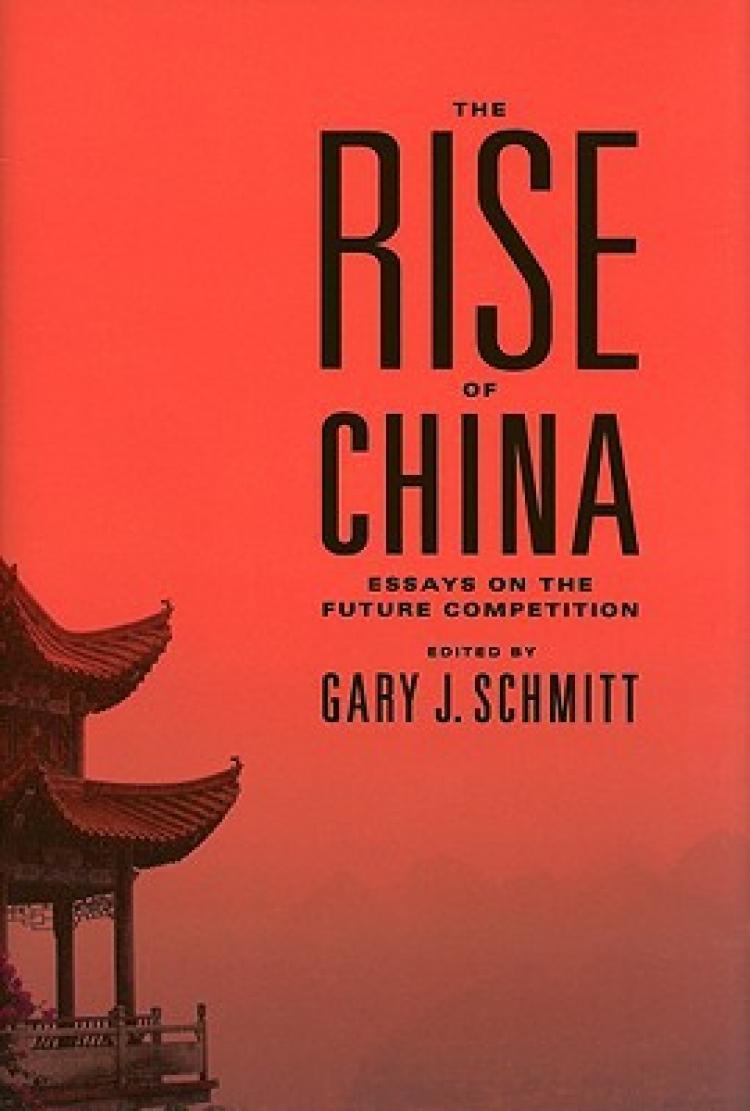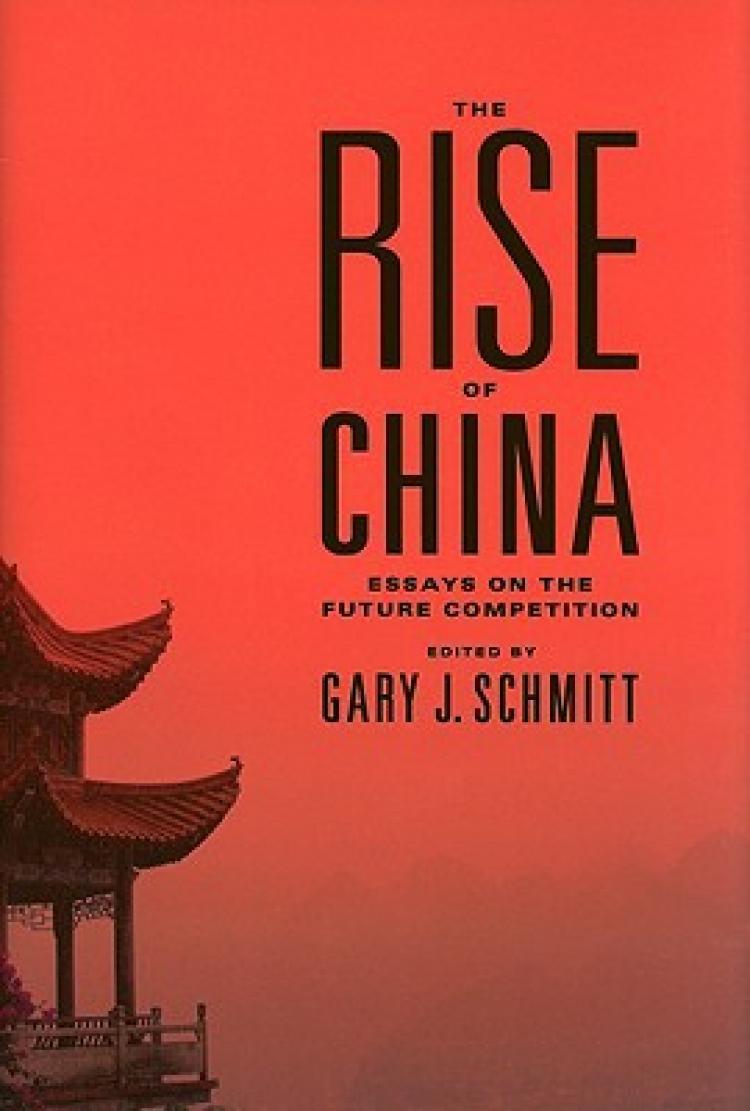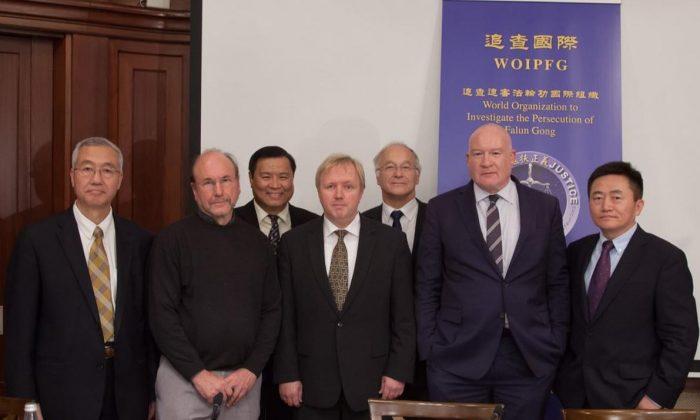[xtypo_dropcap]T[/xtypo_dropcap]his is a set of brief and still timely reflections on China, its communist leadership, and their relationship with the international order. It is a slim volume, but it covers succinctly many of the major areas of contemporary geostrategic concern.
After an introduction by editor Gary J. Schmitt, Robert Kagan sets the tone for the rest of the volume. In an analysis marked by a clear-eyed approach not seen often enough in today’s discussions of China, Kagan certifies that the difference between the current Chinese leadership and the West is largely irreconcilable. But since Kagan’s essay packs the most punch, let us save the best till last.
The second essay, by Ashley J. Tellis, is about “China’s Grand Strategy.” He is mostly concerned with how the Party-state wends its way through the international order, benefiting from it without overtly disrupting it, while at the same time seeking to undermine that order over the long term. This is done by convincing the world that China, led by the Party, is a constructive member of the international community, without actually being constructive.
Tellis cautions against the assumption that China will play the role of a responsible stakeholder. “Rather than dutifully upholding an international order that was designed primarily to protect American interests,” he writes, “a gradually powerful China would actually seek to weaken such an order... and replace it, probably in bits and pieces, with new political arrangements that ha[ve] as their principal purpose the advancement of Chinese ambitions.” Watch out.
Dan Blumenthal next surveys the idea of “Deterring China,” looking at historical cases of Chinese leaders using force to pursue their aims. He evaluates the Taiwan issue in this light. Both the United States and Taiwan should increase their ability to deter China, he writes, before proposing a novel idea for the latter. Taiwan may want to, for instance, train up thousands of marksmen, saboteurs, and special operatives, leave some in Taiwan and dispatch others to Beijing, and in the case of serious conflict they would be able to “inflict protracted damage on Chinese invaders.” Beijing would then “think twice about attacking the island.” Blumenthal’s essay also goes some way to destabilizing the complacent notion that current American deterrence against the Chinese Communist Party (CCP) is sufficient.
Then Michael R. Auslin looks at the strategic and diplomatic dynamics between China and Japan. He cautions Japan to strengthen ties with the United States in the face of China’s “peaceful rise.”
Gary Schmitt writes on the CCP’s selective participation in multilateral institutions, and the failures of multilateralism to do much to influence CCP behavior.
The final two essays of the volume look at the “China Rise” theme from different perspectives. The first is “The Rise of Taiwan,” by Ellen Bork, the last is on China’s troubling demographic arc, by Nicholas Eberstadt. Taiwan’s movements may provoke a reaction from Beijing, and China’s demographic troubles (a rapidly aging population, a distorted gender profile, sub-replacement fertility, breakdown in the family structure, lack of pension plans) may cause China’s rise, peaceful or not, to fizzle. Despite their interest, these final additions depart from the geostrategy theme, and thus seem faintly out of place.
But Robert Kagan’s essay, the first of the volume, is worth reading twice.
Kagan asserts that China does and must see itself at odds with the democratic West, because each regime seeks to make for itself the conditions that further its own prosperity. While liberal democracies promote the values that make liberal democracies thrive, “autocracies pursue foreign policies aimed at making the world safe for autocracy.” Kagan makes this clear, and immediately we see why the Party is so congenial to North Korea, Zimbabwe, Burma, and other international pariahs.
“Governments not founded on the consent of the governed are by nature illegitimate, by liberal logic. They are unstable and insecure. They live in constant fear of their own people, and they rely on force to keep themselves in power,” Kagan writes. All so.
“Naturally, they rely on force in dealing with the world, too. They compensate for the illegitimacy at home with aggressive and belligerent behavior abroad, especially toward liberal, democratic governments, whom they fear the most.” (p. 16-17) The facts of the matter are rarely put so succinctly.
Kagan shows that the CCP is clear that the United States seeks to expand its influence by expanding democracy around the world. They call this “dominance over the thinking and ideology of the world.” For the Party, this is not so much an issue of correct principles in and of themselves, but primarily one of power.
It is the old “might is right” doctrine as Thrasymachus put it to Socrates: “I proclaim that justice is nothing else than the interest of the stronger… everywhere there is one principle of justice, which is the interest of the stronger.” Thus, as Kagan writes: “What Americans and Europeans see as their own disinterested humanitarianism, the Chinese see as hegemonism. Where Americans and Europeans see the triumph of reason, the Chinese see only the triumph of power.” (p. 20)
This inevitably adversarial stance is coupled with the fact that pride in China’s growing international status “has become one of the great sources of legitimacy of the ruling oligarchy of the Chinese Communist Party.” Herein lies the clash. Constitutional democracies, broadly speaking, pursue a principled and reason-based approach to international order; the Party pursues only a power based approach.
One of the unstated assumptions in current China scholarship, perhaps given its post-Cold War pedigree, is that the CCP leadership is no longer really all that ideological. Kagan’s argument quietly and implicitly displaces this idea.
The unwritten conclusion of his analysis is that the CCP still maintains the same ideology it always did: expediency, domination, and unprincipled power plays—this is what lies at the heart of communist theory when the window dressing about the proletariat and bourgeoisie is taken away. The essence of primitive power politics remains.
“In the end,” Kagan notes, “they must either conform or resist.” Conforming is demise, he observes. And the rest of the essays trace one or another facet of that resistance.






